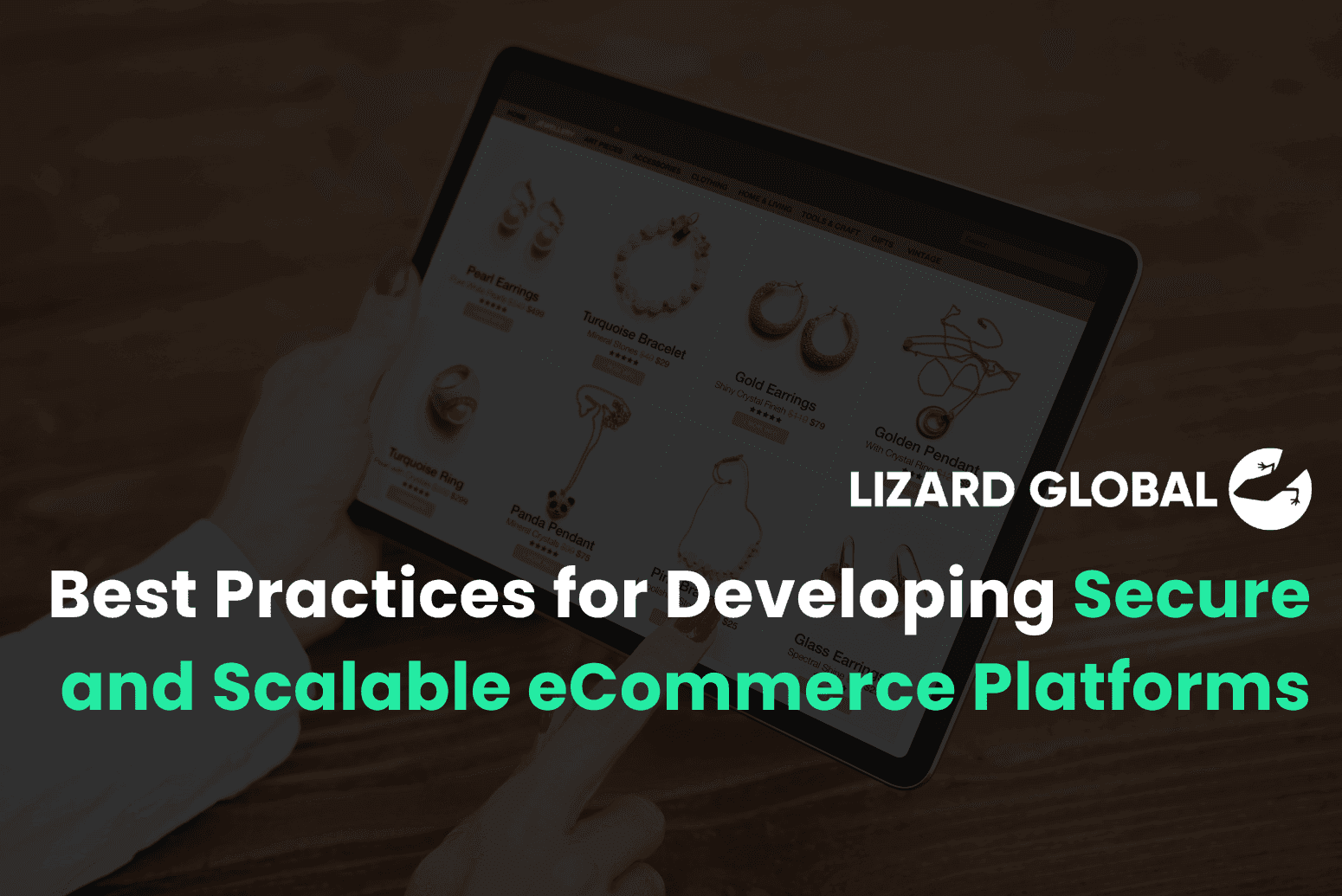Mobile App Development
Web App Development
+ 7 more ...
How The Right Tech Stack Can Make Or Break Your Business

20 Aug 2024
by Nadiy, Senior Content Writer

20 Aug 2024
by Nadiy, Senior Content Writer
Mobile App Development
Web App Development
Tech Stack
MERN
MongoDB
Express.js
React.js
Node.js
JavaScript
How The Right Tech Stack Can Make Or Break Your Business
Table of contents
Contact us
We will get back to you in the next 48 hours.

How The Right Tech Stack Can Make Or Break Your Business
Choosing the right tech stack is crucial for the success of your business. This insightful write-up delves into the importance of choosing the right tech stack - whether you're aiming for rapid development, scalability, or flexibility, understanding your options can set your business up for long-term success. Read on to discover why your tech stack choice can truly make or break your business.
key takeaways
There’s no denying that in the fast-paced world of technology that we live in today, the choices you make at the start of your project can significantly impact the trajectory of your business. Among these decisions, selecting the right tech stack is one of the most crucial. Regardless of the industry you’re in, there is a need for a digital solution be it a web app, mobile app or both! The tech stack you choose not only influences the development process but also affects scalability, performance, maintenance, and the overall success of your business.
In this deep dive, we'll explore why the choice of your tech stack is so critical, focusing on M/PERN, Python with Django, and JavaScript.
What is a Tech Stack and why is it important?
Let’s start with first understanding what a tech stack is. Simply put it is the combination of technologies used to build and run an application. Typically it consists of both front-end and back-end technologies. The front end is what users interact with, while the back end is the server, database, and application logic that supports the front end. Choosing the right tech stack can provide your business with numerous advantages, including speed, scalability, and ease of maintenance.
Do keep in mind that the wrong choice could lead to technical debt, increased costs, and limitations in scaling your business. Let's explore the three tech stacks in question and why they can make or break your business.
1. M/PERN (MongoDB, Express.js, React.js, Node.js)
The M/PERN stack is a popular choice for developing full-stack JavaScript applications. It consists of:
- MongoDB: A NoSQL database that stores data in flexible, JSON-like documents.
- Express.js: A minimal and flexible Node.js web application framework.
- React.js: A JavaScript library for building user interfaces.
- Node.js: A JavaScript runtime built on Chrome's V8 JavaScript engine that allows server-side scripting.
Benefits of M/PERN
Unified Language Across the Stack:
One of the main advantages of the M/PERN stack is that it uses JavaScript all the way through. This means you can write both front-end and back-end code in the same programming language, making it easier for developers to work across different parts of the application.
Scalability:
MongoDB is highly scalable, and its schema-less nature allows for rapid iteration and scaling. Node.js is also known for handling large numbers of simultaneous connections with high capacity, making it ideal for applications that need to scale.
Vibrant Ecosystem:
The JavaScript ecosystem is vast and continually growing. With a wealth of libraries and frameworks available, development with M/PERN can be highly efficient.
Performance: Node.js excels in building real-time applications, such as chat applications and collaborative tools, due to its non-blocking, event-driven architecture.
2. Python and Django
Python, paired with the Django framework, is another powerful combination for web development. Python is known for its simplicity and readability, while Django is a high-level web framework that encourages rapid development and clean, pragmatic design.
Benefits of Python and Django
Rapid Development:
Django comes with a lot of built-in features, such as an admin panel, authentication, and ORM (Object-Relational Mapping), which can drastically speed up the development process.
Scalability:
Django is designed to help developers take applications from concept to completion as swiftly as possible. It’s scalable, making it suitable for handling high volumes of traffic.
Security:
Django has a strong focus on security. It includes protections against many common threats like SQL injection, cross-site scripting, and cross-site request forgery out of the box.
Extensive Libraries:
Python’s extensive standard library and the rich ecosystem of third-party packages available for Django make it easy to add complex features with minimal effort.
Community Support: Django has a large, active community, which means there’s a wealth of knowledge, plugins, and resources available to developers.
3. JavaScript as a Standalone Language
JavaScript is a cornerstone of modern web development. Its ability to run both on the client side (front end) and server side (back end) makes it incredibly versatile.
Benefits of JavaScript
Ubiquity:
JavaScript is everywhere—on the web, in mobile apps, and increasingly on the server side with environments like Node.js. Its widespread use means that finding developers and resources is relatively easy.
Flexibility:
JavaScript’s flexibility is one of its greatest strengths. It allows for a variety of programming paradigms, from functional to object-oriented, making it adaptable to different types of projects.
Real-Time Capabilities:
JavaScript’s non-blocking nature and event-driven architecture make it ideal for building real-time applications like chat apps, gaming servers, and collaborative tools.
Community and Ecosystem: With one of the largest communities in the programming world, JavaScript benefits from a constantly evolving ecosystem. New tools, frameworks, and libraries are continuously developed, keeping it at the cutting edge of technology.
Want to find out how much it costs to build your dream app or web app?
Making the Right Choice for Your Business
The tech stack you choose will depend heavily on the specific needs of your business, the expertise of your development team, and the long-term goals you have for your application.
Here are some considerations to keep in mind:
Project Requirements: Assess the nature of your project. If you need real-time capabilities and a unified language across the stack, M/PERN might be the best choice. If you require rapid development with a strong focus on security, Django with Python could be ideal.
Scalability: Consider how scalable your application needs to be. M/PERN offers great scalability with MongoDB and Node.js, while Django can handle significant traffic but may require more effort for extremely high loads.
Development Speed: If you need to get to market quickly, Django’s out-of-the-box features can save significant development time. On the other hand, the flexibility of JavaScript allows for rapid prototyping.
Team Expertise: Leverage your team’s existing skills. If your developers are already proficient in JavaScript, the M/PERN stack or a full JavaScript approach might be more efficient. If they’re more familiar with Python, Django could be the better route.
Future-Proofing: Think about the future. Will your tech stack allow you to easily add new features, integrate with other systems, or pivot if necessary? A well-chosen tech stack should be adaptable to your evolving business needs.
Learn more about how to choose the right tech stack for your business.
Partner With Lizard Global To Get The Best For Your Business
Choosing the right tech stack is a decision that can make or break your business. We at Lizard Global have over 10 years experience in 25+ industries using this tech stack in our custom software development and understand that the key is being aligned with your business objectives and project requirements.

We make informed decisions to help you set your business up for success, ensuring that our technology supports your growth.
Join 2000+ subscribers
Stay in the loop with everything you need to know

How The Right Tech Stack Can Make Or Break Your Business
Choosing the right tech stack is crucial for the success of your business. This insightful write-up delves into the importance of choosing the right tech stack - whether you're aiming for rapid development, scalability, or flexibility, understanding your options can set your business up for long-term success. Read on to discover why your tech stack choice can truly make or break your business.
There’s no denying that in the fast-paced world of technology that we live in today, the choices you make at the start of your project can significantly impact the trajectory of your business. Among these decisions, selecting the right tech stack is one of the most crucial. Regardless of the industry you’re in, there is a need for a digital solution be it a web app, mobile app or both! The tech stack you choose not only influences the development process but also affects scalability, performance, maintenance, and the overall success of your business.
In this deep dive, we'll explore why the choice of your tech stack is so critical, focusing on M/PERN, Python with Django, and JavaScript.
What is a Tech Stack and why is it important?
Let’s start with first understanding what a tech stack is. Simply put it is the combination of technologies used to build and run an application. Typically it consists of both front-end and back-end technologies. The front end is what users interact with, while the back end is the server, database, and application logic that supports the front end. Choosing the right tech stack can provide your business with numerous advantages, including speed, scalability, and ease of maintenance.
Do keep in mind that the wrong choice could lead to technical debt, increased costs, and limitations in scaling your business. Let's explore the three tech stacks in question and why they can make or break your business.
1. M/PERN (MongoDB, Express.js, React.js, Node.js)
The M/PERN stack is a popular choice for developing full-stack JavaScript applications. It consists of:
- MongoDB: A NoSQL database that stores data in flexible, JSON-like documents.
- Express.js: A minimal and flexible Node.js web application framework.
- React.js: A JavaScript library for building user interfaces.
- Node.js: A JavaScript runtime built on Chrome's V8 JavaScript engine that allows server-side scripting.
Benefits of M/PERN
Unified Language Across the Stack:
One of the main advantages of the M/PERN stack is that it uses JavaScript all the way through. This means you can write both front-end and back-end code in the same programming language, making it easier for developers to work across different parts of the application.
Scalability:
MongoDB is highly scalable, and its schema-less nature allows for rapid iteration and scaling. Node.js is also known for handling large numbers of simultaneous connections with high capacity, making it ideal for applications that need to scale.
Vibrant Ecosystem:
The JavaScript ecosystem is vast and continually growing. With a wealth of libraries and frameworks available, development with M/PERN can be highly efficient.
Performance: Node.js excels in building real-time applications, such as chat applications and collaborative tools, due to its non-blocking, event-driven architecture.
2. Python and Django
Python, paired with the Django framework, is another powerful combination for web development. Python is known for its simplicity and readability, while Django is a high-level web framework that encourages rapid development and clean, pragmatic design.
Benefits of Python and Django
Rapid Development:
Django comes with a lot of built-in features, such as an admin panel, authentication, and ORM (Object-Relational Mapping), which can drastically speed up the development process.
Scalability:
Django is designed to help developers take applications from concept to completion as swiftly as possible. It’s scalable, making it suitable for handling high volumes of traffic.
Security:
Django has a strong focus on security. It includes protections against many common threats like SQL injection, cross-site scripting, and cross-site request forgery out of the box.
Extensive Libraries:
Python’s extensive standard library and the rich ecosystem of third-party packages available for Django make it easy to add complex features with minimal effort.
Community Support: Django has a large, active community, which means there’s a wealth of knowledge, plugins, and resources available to developers.
3. JavaScript as a Standalone Language
JavaScript is a cornerstone of modern web development. Its ability to run both on the client side (front end) and server side (back end) makes it incredibly versatile.
Benefits of JavaScript
Ubiquity:
JavaScript is everywhere—on the web, in mobile apps, and increasingly on the server side with environments like Node.js. Its widespread use means that finding developers and resources is relatively easy.
Flexibility:
JavaScript’s flexibility is one of its greatest strengths. It allows for a variety of programming paradigms, from functional to object-oriented, making it adaptable to different types of projects.
Real-Time Capabilities:
JavaScript’s non-blocking nature and event-driven architecture make it ideal for building real-time applications like chat apps, gaming servers, and collaborative tools.
Community and Ecosystem: With one of the largest communities in the programming world, JavaScript benefits from a constantly evolving ecosystem. New tools, frameworks, and libraries are continuously developed, keeping it at the cutting edge of technology.
Want to find out how much it costs to build your dream app or web app?
Making the Right Choice for Your Business
The tech stack you choose will depend heavily on the specific needs of your business, the expertise of your development team, and the long-term goals you have for your application.
Here are some considerations to keep in mind:
Project Requirements: Assess the nature of your project. If you need real-time capabilities and a unified language across the stack, M/PERN might be the best choice. If you require rapid development with a strong focus on security, Django with Python could be ideal.
Scalability: Consider how scalable your application needs to be. M/PERN offers great scalability with MongoDB and Node.js, while Django can handle significant traffic but may require more effort for extremely high loads.
Development Speed: If you need to get to market quickly, Django’s out-of-the-box features can save significant development time. On the other hand, the flexibility of JavaScript allows for rapid prototyping.
Team Expertise: Leverage your team’s existing skills. If your developers are already proficient in JavaScript, the M/PERN stack or a full JavaScript approach might be more efficient. If they’re more familiar with Python, Django could be the better route.
Future-Proofing: Think about the future. Will your tech stack allow you to easily add new features, integrate with other systems, or pivot if necessary? A well-chosen tech stack should be adaptable to your evolving business needs.
Learn more about how to choose the right tech stack for your business.
Partner With Lizard Global To Get The Best For Your Business
Choosing the right tech stack is a decision that can make or break your business. We at Lizard Global have over 10 years experience in 25+ industries using this tech stack in our custom software development and understand that the key is being aligned with your business objectives and project requirements.

We make informed decisions to help you set your business up for success, ensuring that our technology supports your growth.
Join 2000+ subscribers
Stay in the loop with everything you need to know
FAQs

Is it possible to switch tech stacks after a project has already started?
How does the choice of tech stack affect the cost of development?
What are the long-term maintenance implications of different tech stacks?
How does the tech stack influence the security of my application?
What factors should I consider when choosing between M/PERN, Python with Django, and JavaScript?
similar reads







